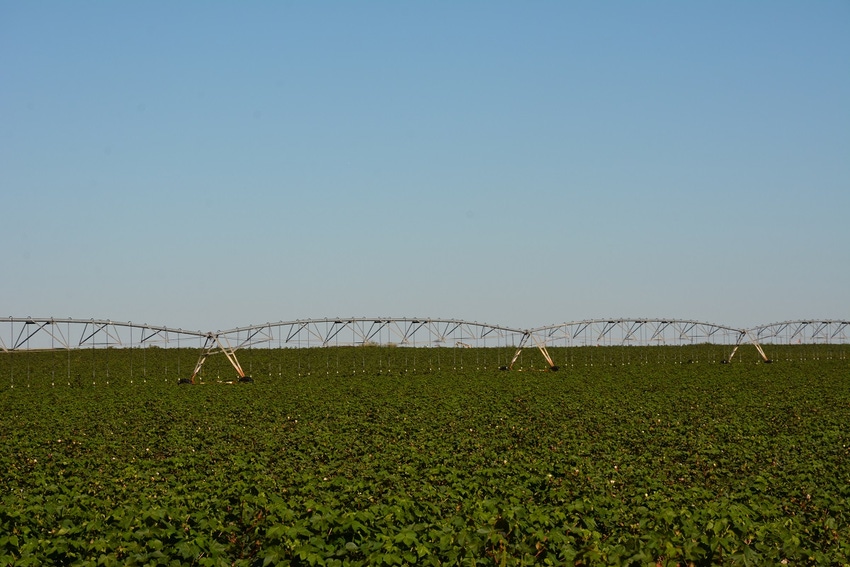
As most Southwest cotton farmers head into the home stretch to make the 2017 crop, a progress report seems appropriate. Southwest Farm Press contacted cotton specialists this week in Texas and Oklahoma to get their perspectives on crop prospects.
We asked Seth Byrd, Texas AgriLife Extension cotton specialist at the Research and Extension Center in Lubbock; Randy Boman, Oklahoma State University Extension State Cotton Lead, Altus, Oklahoma; and Gaylon Morgan, Texas AgriLife Extension State Cotton Specialist, College Station, for an assessment of conditions. We will provide these updates over the next few days, starting with Seth Byrd.
We asked:
FP—What effect has recent weather had on development of the crop—good and bad?
Byrd—Overall, the recent rain was very beneficial. For a large proportion of the High Plains it was the first substantial rain received since the weekend prior to July 4. Most of the cotton is in mid or peak bloom, so this was a very timely rain event.
FP—Some areas have had heavy rain. Are you seeing damage?
Byrd—The only downside has been the low- to mid- 80 degree temperatures in the area in the week following the rain, with long-range forecasts showing only 3 out of the next 15 days in the 90s. Obviously, a lot can change in that time, and rain is also back in the forecast, but slightly higher temps would make this an ideal forecast. The only (other) downside is that the rain missed much of the area south of Lubbock, which has been a common theme this year. Dawson, Terry, Yoakum, Gaines, Martin, and Howard counties seem to have had a unique ability to dodge rain in 2017. This area could still benefit greatly from a good rain.
FP—How much abandonment have we seen or are likely to see?
Byrd—I’m still sticking to my 12 percent to 16 percent numbers from a previous conversation, but I wouldn’t be surprised to see it inch closer to 20 percent, depending on how the fall goes. Obviously, at that point it’s more a case of acres that folks stuck with that came up late, and the heat units just weren’t enough to make harvest feasible or possible.
FP—Have recent wet conditions had any effect on disease? Any surprises?
Byrd—Not yet, but these conditions are eerily similar to those we had in early August last year, right before Verticillium wilt became an issue. So we’re on the lookout.
FP—How has introduction of the new technology gone? Are you seeing much off-target damage? Are many growers using the Flag the Technology Mobile App?
Byrd—Adoption and stewardship of the technology couldn’t have gone much better. I give the credit to our producers for being conscious of the importance of handling these new tools the right way and being good neighbors. Flag the Technology seemed to get a lot of interest prior to the season but doesn’t appear to be heavily adopted. I get the feeling that our producers have done more one-on-one talking with their neighbors, which is probably the way it should be.
Next up, Randy Boman talks Oklahoma Cotton.
About the Author(s)
You May Also Like






